Pilot's war images developed 100 years on
- Published
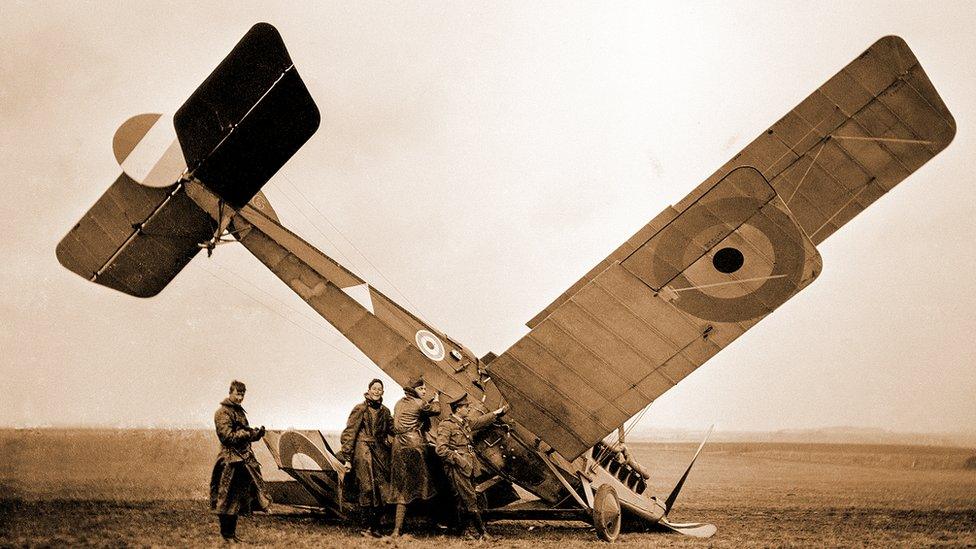
The images "graphically show the risk intrinsic to early flight"
Photographs taken by a British fighter pilot during World War One which lay undeveloped for nearly 100 years have gone on show at a museum.
Captain William Chambers died aged 21 in a routine reconnaissance mission over France in May 1918 and his pictures never surfaced.
But they were developed when his nephew inherited them and showed them to a photographer in Lancashire.
The images depict daily life for pilots and include aerial shots over Kent.
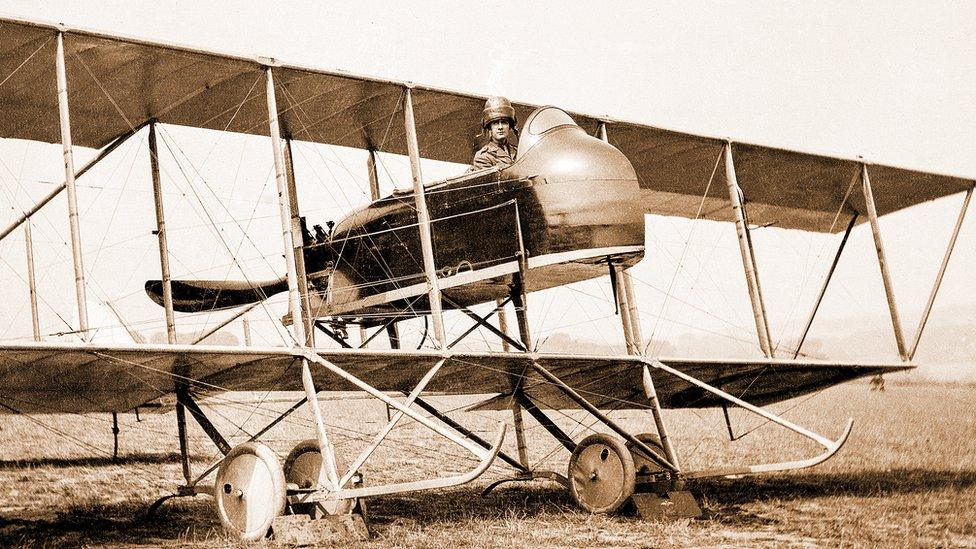
Captain Chambers is seen seated in an aircraft at Shoreham

The pictures show members of the Royal Flying Corps at work and play
David Lewis, of Leyland Photographic Society in Lancashire, said he found it "very emotional" after spending more than 200 hours developing the pictures in his darkroom at home.
The 80-year-old photographer added: "There were around 8,000 pilots killed in training and life expectancy could be a matter of just a few days.
"These pictures show the importance of the Royal Flying Corps, which later became the Royal Air Force.
"During the Battle of the Somme the pilots would fly over the battle lines and take pictures of the German trenches. Then they would write a note, put it in a metal tin, and drop it down to the artillery to tell them if they were firing in the right place.
"It's amazing to think of."
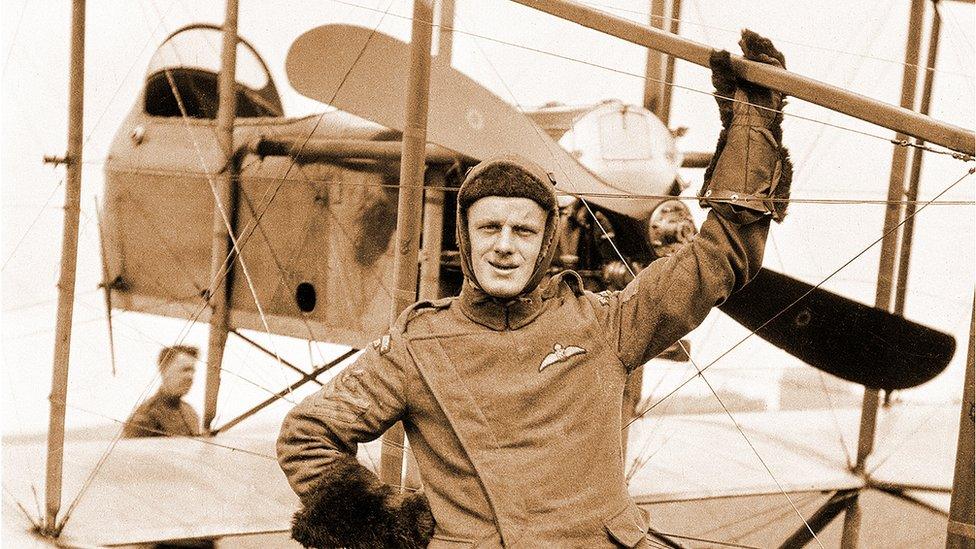
The Royal Flying Corps later became known as the Royal Air Force
Born in 1897, Captain Chambers was an electrical engineer who joined the Lincolnshire Regiment.
He gained his pilot's licence in October 1916 and worked as a photographic reconnaissance officer with 49 Squadron in Kent.

More men were killed in training than in combat during the conflict
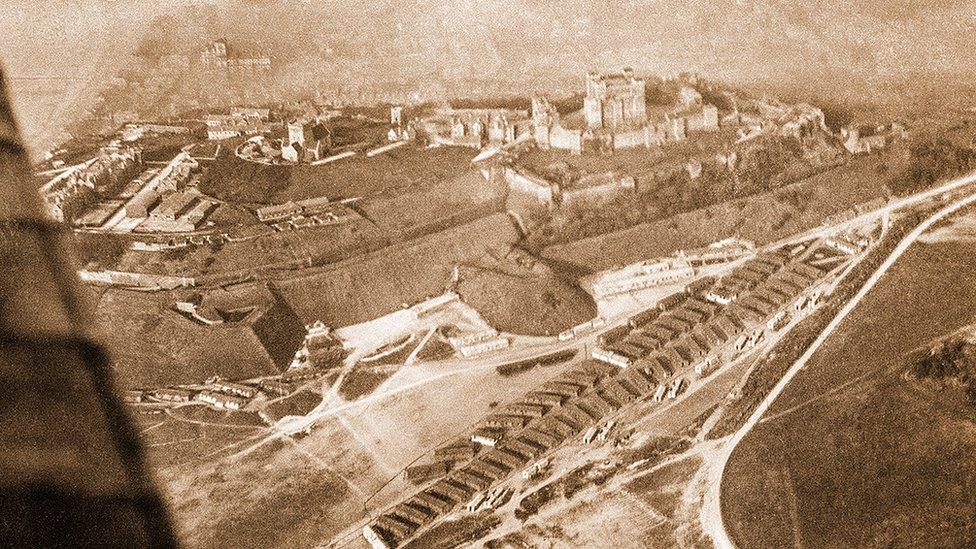
Captain William Chambers took this aerial image of military headquarters at Dover Castle
Dr David Hunt, curator of South Ribble Museum, where the images are exhibited, said the photos "graphically shows the risk intrinsic to early flight".
"Landing strips were usually rough fields, the aircraft were string-bound wooden struts and canvas, and crashes were very frequent. Far more men were killed in training than in combat."
The exhibition will run until 1 October.
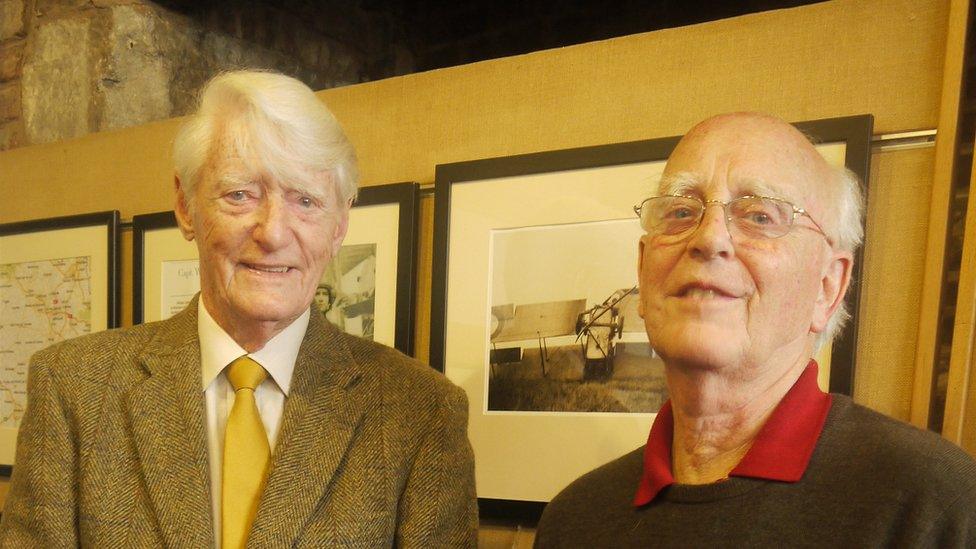
The negatives were developed by David Lewis (left), seen here with Captain Chambers' nephew Richard